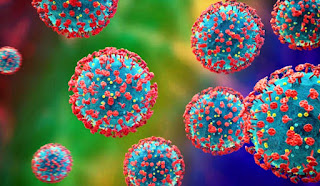Covid-19 Vaccination for Children Right or Wrong? Information & Qs about Infectious Diseases & Vaccinations
Are You Considering the Covid-19 Vaccination for your Young Child?
7th April 2022
Short Look At the History of Vaccinations and Infectious Diseases and Preventions
We are living through the dawn of Covid-19, and as frightening as it may seem right now it's worth remembering what we have already accomplished in combating other serious infectious diseases
To make comparisons between various infectious diseases we need ways to contrast them, such things as
- Total number of deaths caused by an outbre
- Total number of infected case
- A way of ranking how lethal an infectious disease is using Case Fatality Rate CFR
Ranking Lethality of Infectious Diseases
Case fatality rate (CFR) for a given epidemic is the probability of dying being given a case, so the ratio of cumulative number of deaths over cumulative numbers of cases.
However, which cases are considered in CFR - infected (symptomatic or not), symptomatic (confirmed or not) or confirmed.
This means that a CFR is often given using total confirmed cases with a positive test result and deaths after a positive test result. At other times an infectious disease may be given an estimated CFR based upon what known information is available at the time
CFRs May Change!
It is also worth remembering that the CFR of a particular infectious disease may change over time and location, for example we have seen great improvements with things like tetanus, rubella and measles in richer countries, yet have some way to go in poorer countries.
Limitations of CFR
Classification of death may also hinder and limit comparability of CFR figures due to the delay between occurrence of infection and death, and due to other underlying health conditions that may contribute to the death of an individual.
External factors such as the performance of a Nation's healthcare system will also affect CFR, things like the number and availability of tests carried out, and the level and availability of the overall healthcare delivered to people.
Without regular testing programmes we lack data and information.
Some infectious diseases like HIV and Covid-19 have asymptomatic transmission, that's transmission between people who appear otherwise to be well, and so unknowingly transmit the virus to other people.
So, it's worth remembering that the CFR of a particular infectious disease can and often is be a very difficult thing to track and observe.
However even with its difficulties and limitations the CFR is one of the most universally agreed upon ways to compare and contrast how serious infectious diseases affect our lives and how they have done throughout history.
A positive example of how together we as a human race managed to beat an extremely infectious disease:
Smallpox and it's Eradication
Smallpox - one of the most devastating and most contagious diseases, thought to have existed for around 3000 years, causing millions and millions of deaths and was fatal in up to 30% of cases.
- CFR up to 30%
Smallpox disease was spread from person to person by two strains of virus
- Variola vaccinae minor with a mortality rate of approximately 1%
- Variola vaccinae major with a mortality rate of approximately 30%
At the time smallpox was far more contagious than today's Covid-19 which currently has an estimated mortality rate of around 0.5% to 1% of infected people.
Development of the First Successful Vaccination
Some first attempts at inoculation: that is using the disease against itself in order to produce some immunity against the disease, were recorded back in China some 1000 years ago.
The idea of inoculation came from what we observed throughout history: if we got the same infectious disease twice the second time around it was usually a much milder case.
Some of the first attempts at inoculation involved blowing a small sample of infected matter at an individual, when inhaled it stimulated the body's immune system into producing antibodies, and because the sample was very small it prevented the full disease developing. This technique helped to build up the immune system so that it was more able to combat any future infection.
In 1717 the wife of a British Ambassador Lady Mary Wortley Montagu accompanied her husband on a visit to Constantinople. Where she was surprised to discover smallpox was relatively harmless, in comparison to it generally being fatal back in Britain. Lady Mary went on to find out about local smallpox parties and the inoculation techniques used. These she later used to protect her own two children upon returning to Britain and shared her knowledge with others.
Then in 1796 a British physician and scientist Edward Jenner created the worlds first smallpox vaccine, he found that by contracting a milder related virus called cowpox, helped build up immunity against smallpox.
Jenners' smallpox vaccination method continued to be developed for over 200 years and eventually resulted in the most successful vaccination programme in global history. It led to the eradication of the infectious disease smallpox and in doing so saved millions and millions of lives.
So What Does it take To Beat A Highly Infectious Disease
A committed global effort by well supported public healthcare systems and governments, who are able to fund not only for themselves but also able to enable funding for the poorer Nations.
It was The World Health Organisation (WHO) founded in 1948 that brought about a global coordination and effort that eventually led to "the global eradication of smallpox" in 1980, "marking one of the most successful collaborative public health initiatives in history." - WHO
WHO: World Health Organisation
"WHO is the directing and coordinating authority for health within the United Nations system. It is responsible for providing leadership on global health matters, shaping the health research agenda, setting norms and standards, articulating evidence-based policy options, providing technical support to countries and monitoring and assessing health trends.
In the 21st century, health is a shared responsibility, involving equitable access to essential care and collective defense against transnational threats" - by the United Nations UN
Introduction
This article takes a short look at some aspects of infectious diseases in recent history, and draws on the substantial and overall increase in our life expectancy. This is something many of us take for granted in modern day society.
"COVID-19 The Long View" an article by Leigh Shaw-Taylor and Thomas Almeroth-Williams, published online by The University of Cambridge [online] at
https://www.cam.ac.uk/stories/covid19-the-long-view
Draws the attention to the changes in global life expectancy
- In 1800 it was about 30 years old
- In 1900 in the UK it was about 46 years old
- In 2019 it was about 73 years old
"Before the 20th century most deaths were from infectious diseases, triggered by changes in behaviour induced by famine conditions."
"Today in low and middle income countries most deaths occur amongst the elderly, while deaths in infancy and childhood are increasingly rare."
Covid-19 is a highly infectious disease however when seen in historical context has a low CFR estimated between 0.5% to 1%, and "perhaps two-thirds of deaths to Covid-19 are people who would have died very soon anyway."
"By 1800 the beginning of the 'mortality revolution' was underway".
['Mortality Revolution' was a term coined by Richard A. Easterlin's article 'Industrial Revolution and Mortality Revolution: Two of a Kind?' in 1995. Easterlin suggests 'both revolutions mark the onset of accelerated and sustained technological change…' and 'They occur largely independently…' and that the later occurrence of the 'Mortality Revolution' being due to later biomedical developments.]
We began to live far longer!
Tuberculosis
- Estimated 66 million lives have been saved through diagnosis and treatment between 2000-2020 - WHO
Plague
- CFR of about 60-90% likely "...defeated by the development of relatively simple but stringent surveillance and quarantine measures."
Modern urbanisation accompanied by increased trade intensified the circulation of some infectious diseases, and this flatlined life expectancy for many years.
However, alongside smallpox some other big killers that declined rapidly in eighteenth and early nineteenth centuries were things like
- Malaria
- Typhus
- *Cholera
Improved Living Helped Greatly
Life expectancy increased with improvements in water supply and sewerage and rising living standards, alongside public health interventions which played a major part in this.
Improved Medication Helped
After 1950 we saw widespread use of medicines such as antibiotics and mass vaccination campaigns.
Modern Changes in the Causes of Death
The top causes of death worldwide have changed considerably in modern times, because of the declining incidence of death from infectious diseases, since many are now preventable and treatable, so people generally live far longer and die from different kinds of things.
Let's take a look at the more recent causes of death:
Top causes of death worldwide in 2019 - WHO
(In order with the leading cause of death first)
- Ischaemic heart disease (about 9 million)
- Stroke (just over 6 million)
- COPD (just over 3 million)
- Lower respiratory infections (about 2.5 million)
- Neonatal conditions (about 2.5 million)
- Trachea, broncos, lung cancers (just under 2 million)
- Alzheimer disease and other dementi
- Diarrhoeal diseases
- Diabetes mellitus
- Kidney disease
- Curious of the liver
- Road injury (about 1.25 million)
- Tuberculosis
- Hypertensive heart disease
- Colon and rectum cancers
- Stomach cancer
- Self-harm (about 0.75 million)
- Falls (about 0.75 million)
- HIV/AIDS
- Breast Cancer
Some of Today's Leading Causes of Death are Preventable
Some of the leading causes of death are preventable injury-related deaths. Some others are potentially preventable things like heart disease, stroke, chronic lung disease and cancers, these often happen from the negative consequences of air pollution, poor living conditions, malnutrition, poor mental health and addictions.
Some Potentially Preventable Causes Of Death Are Related To Things like:
Malnutrition which encompasses
- Undernutrition - wasting, stunting, underweight and deficiencies
- Overweight - overeating and obesity
- Eating disorders
Addictions are often associated with poor mental health and often overlap with malnutrition and include things like
- Smoking
- Alcohol abuse
- Drug abuse
- Binge eating
- Sugar
- Caffeine
Poor Mental Health is often associated with traumatic life changing events such as
- Child abuse and child neglect
- Sexual abuse, rape, violent attacks and other serious crimes
- Physical abuse, mental abuse, domestic abuse
- Losing a close loved one, death and grief
- Child birth, abortion, being awake during an operation
- Near death experiences, near fatal vehicle collisions and other serious accidents
- War and terrorist attacks
- Catastrophes and natural disasters like earth quakes and volcanic eruptions
- Life changing events like heartbreak, divorce and moving home
- Detachment and abandonment
- Sometimes witnessing a traumatic event
Poor Living Conditions include things like
- Homelessness lack of shelter
- Cold and damp conditions
- Lack of food and nutrition
- Lack of drinking water
- Poor sanitation
- Lack of clothing, bedding and warmth
- Lack of social support from family friends and community
- Homes poorly maintained
- Lack of healthcare
Air Pollution affected by things like
- Many studies suggest air pollution has already been worsened by modern Industrial Revolution, and carries on being affected by modern ways of living however this is a very debatable subject area among many! (Something I will not go into any further now.)
- Vehicle emissions
- Use of machinery and factories
- Use of chemicals and fertilizers
- Burning of fossil fuels
- Plastic pollution
- Climate change global warming
- Methods used for sanitising water
- Poor recycling methods
Many of the things above overlap and even though they are potentially preventable, lack of education, lack of good public healthcare systems and lack of good living conditions and lack of overall support massively impact upon our overall level of health and well being around the globe.
These things are typically not things that many of us individuals have any control over and most of us lack the power and funding to be able to change them.
Poverty - A Leading Global Cause of Death
Many articles from many global organisations suggest that "for more than two decades, extreme poverty was steadily declining. Now, for the first time in a generation, the quest to end poverty has suffered it's worst setback." And "Global extreme poverty is expected to rise in 2020..." "... As a disruption of the COVID-19 Pandemic compounds the forces of conflict and climate change,..." The World Bank 'Poverty' [Online] https://www.worldbank.org
(Something I will not go into any further now!)
However For Richer Nations - We Still Have Medical Development, Research and Vaccinations
Development and research will continue to bring us new preventable vaccinations. Each one must first undergo strict screenings and evaluations to determine its effectiveness and then be fully tested to evaluate its safety and potential to prevent disease. - WHO
Note Key Terms:
- Strict Screenings
- Safety Evaluations
- Fully Tested
- To Determine it's Effectiveness
So Some Success in Some Places!
Some infectious diseases are very treatable and preventable, some from better living conditions, sanitisation and clean water, and some immunisation programmes have proven to be very successful, like with Measles and Tetanus
Tetanus
- In the UK in 2020 GOV.UK reports there were 7 cases and 2 deaths recorded, 'tetanus is a potentially life-threatening but preventable infection and is very rare in the UK due to the success of the immunisation programme' - GOV.UK
- In 2018, WHO reports that approximately 25,000 newborns died from neonatal tetanus, a 88% reduction from the situation in 2000 - WHO
- Tetanus is a potentially life-threatening but very preventable disease due to its vaccine
- Protects about 95% for ten years at a time
- Boosters are required every ten years
Measles
CFR varies around the globe and is even higher in immunosuppressed groups and in children under 5. Richer countries with fully funded public education systems, healthcare systems and well run immunisation programmes aim towards measles eradication, whilst some poorer countries lack far behind.
In England and Wales:
From 2000 to date GOV.UK suggests there were 8 deaths in England and Wales that could have been prevented by UK national immunisation programme www.gov.uk
In 2020, 698 cases and only *1 death in England and Wales (*provisional figure ONS) www.gov.uk relates to a CFR of about 0.14% in England and Wales)
Around the Globe:
'In the last 20 years, WHO reports that the measles vaccine is estimated to have averted more than 30 million deaths globally' - WHO
WHO reports that an estimated global cases in 2020 was 7.5 million with an estimated 60,700 deaths - WHO (This relates to a global CFR of about 0.8%)
'Deaths from Democratic Republic of the Congo (DRC) measles outbreak top 6000' in 2019, with around 310,000 cases (this had an estimated CFR of about 1.94%) - WHO
The Measles & Rubella Initiative (M&RI) is a global partnership committed to stopping measles and rubella globally - www.measlesrubellainitiative.org
Conclusion
Medical research and development has led to great advances in the treatment and prevention of some infectious diseases. It has delivered some very successful immunisation programmes, but these are often only available to those lucky enough to be born into a Nation state that is wealthy enough to offer fully funded public healthcare systems and services, that are able to deliver fully funded immunisation programmes to all of its citizens.
Covid-19
- Estimated globally a CFR of 0.5% to 1%
- Total global number of deaths is a fast changing target!
- In England and Wales two years up until 18th March 2022
- There was 168,058 registered deaths associated with Covid-19, figures from the Office of National Statistics - ONS
- Of these 168,058 total registered deaths
- 167,949 were Adults 99.93%
- 109 were children 0.07% (less than 19 years of age)
If you are making a decision to vaccinate young children with the latest Covid-19 vaccination programmes recently becoming available, then these are the things that might go through my mind?
England & Wales Up until
18 March 2022
- Total number of registered child deaths in England and Wales associated with Covid-19 up until 18th March 2022
- was 109 children up to 19 years old - ONS
- 45 of these 109 children were up to 14 years old - ONS
- 76% of these 45 children up to 14 years old were considered to have had other serious underlying health conditions
- 24% of these 45 children up to 14 years old were considered otherwise healthy.
- Total number of registered child deaths in all of the United Kingdom including the 45 children above in England & Wales, associated with Covid-19 up until 18th March 2022 was 61 children up to 14 years old - ONS
- 76% of these 61 children up to 14 years old were considered to have had other serious underlying health conditions
- 24% of these 61 children up to 14 years old were considered otherwise healthy.
- Many articles report that of those child Covid-19 related deaths 76% had serious underlying health conditions, such as neurological and cardiac, some malignancy, it was observed that obesity increased the risk further; and note not one of the listed conditions so far has been Asthma.
- This relates to a TOTAL of 15 otherwise healthy children up to age 14 had a registered death associated with Covid-19 in the United Kingdom between March 2020 and 18th March 2022.
- In contrast to…
- In 2020 ETA reports the number of children killed on Britain's roads is 52. [Online] www.eta.co.uk
- What are the other leading causes of death in the UK to infants and children? Are any of these causes linked to the delivery of poor healthcare services?
- Have ALL phases of trials been completed on the type of vaccination you are considering giving to your child?
- Children build up great immunity fast, research suggests letting young children eat boogers has health benefits and eating a little dirt and having dirty hands helps build up their bodies' natural defences too, however check play areas for any animal faeces! - This is relative to considering the possibilities and natural strengths within our human bodies
- Have you looked at the serious side effects that have already occurred in adults? Have you checked out the unexpected long term effects?
- Should you take your child's future consent away from them, by giving it away now when they are too young to be able to choose for themselves? Is this something you might live to regret? - Consider in contrast would you force a particular religion on to your child?
- What happened to natural herd immunity?
- What are the exact ingredients of each vaccine?
- Where were the first clinical trials of the Covid-19 vaccine carried out on children? How many children and in which states?
- Rare cases of hepatitis in children! Highly reported in recent news articles as of April 2022, some contradictory reports exist online, where some state the first cases were reported in UK other reports suggest it was in Alabama in October 2021!?!
- What does quadrupole masked-blind randomised controlled clinical trials mean! Look it up.
- Total number of registered child deaths in England and Wales associated with Covid-19 up until 18th March 2022 was 34 children (up to 9 years old) - ONS
- 76% of those 34 is approximately 26 children were considered to have serious underlying health conditions.
- 24% of those 34 is approximately 8 children were considered otherwise healthy.
- Furthermore, this information comes from https://www.data.cdc.gov The Center for Disease Control and Prevention reported on 27th April 2022 that in the US total Covid-19 deaths among 0-4 year olds is 396, and among 5-18 year olds is 789, total for all ages is 993,961. If those 993,961 total deaths, 396+789=1185 were children and 992,776 were adults, or 99.881% were adults and 0.119% were children.
Some Other Comparable Infectious Diseases and Contrasting CRFs
1918 Influenza Pandemic
- Estimated around 500 million people became infected and at least 50 million died globally
- CFR of about 5% to 10%
Black death
- A bubonic plague pandemic 1346-1353
- May have had a CFR of about 60-90%
- Deaths 75 to 200 million people
*Cholera
- During 19th century spread across the world from its original reservoir in the Ganges Delta in India
- Six subsequent pandemics killed millions of people across all continents, the current seventh pandemic started in South Asia in 1961, reached Africa in 1971 and the Americas in 1991
- WHO estimated each year 1.3 to 4 million cases and 21,000 to 143,000 deaths globally - WHO
- Provision of safe water and sanitation is critical to prevent and control transmission of waterborne viruses
- If left untreated cholera has a CFR of about 25-50%
Diphthea
- Estimated global CFR of about 5% to 10%
- Higher CFR of 20% for children under 5
- Vaccine use resulted in 90% reduction in cases globally between 1980-2000
- In 2015, WHO reports Diptheria resulted in 2,100 deaths down from 8,000 in 1990
Ebola
- Average CFR is around 50% and have varied from 25% to 90%
- Ervebo vaccine "... was deployed in Guinea for Phase III efficacy evaluation in 2015. Results indicated that the vaccine was "100% effective".." and "... According to preliminary results, the vaccine was 97.5% effective at stopping EBOV transmission compared to no vaccination."
HIV
- When it struck in 1980s before development of retroviral drugs the CFR was over 80%
- Drops to 10-20% with modern treatments
Mumps
- Vaccine led to more than 99% reduction in mumps cases
- Was a leading cause of hearing loss
- www.cdc.gov
Polio
- CFR for paralytic polio is generally 2% to 5% among children and up to 15% to 30% among adults
- In UK Polio Vaccination was introduced in the mid 1950s
- No case of polio has been caught in UK since the mid 1980s
- Polio is a leading cause of short-term and long term paralysis
- ***Mistakes were reported with the early delivery of the Polio Vaccination***
Pneumococcal
- Pneumonia vaccine provides some protection against a form of bacterial meningitis caused by pneumococcal bacteria
- About 50% to 85% effective
- Given to those who are more vulnerable or who are at higher risk of serious illness
- www.nhs.uk
Rabies
- Vaccine preventable zoonotic virus
- Once symptoms appear rabies is virtually 100% fatal
Rotavirus
- About 90% of children will be protected against severe rotavirus illness a gastroenteritis
- CFR of about 2.5%
SARS Severe Acute Respiratory Syndrome is caused by the SARS Coronavirus, known as SARS CoV
- 2 self-limiting outbreaks resulted in a highly contagious and potentially life threatening form of pneumonia between 2002-2004 www.nhs.us
- CFR of about 10%
- No known cases since 2004
Tuberculosis
- Between 1848 and 1872 tuberculosis was the leading cause of death in Britain with a rate of about 15%
- 13th global leading cause of death - WHO
- Globally a total of 1.5 million people died from TB in 2020, an estimated 10 million people fell ill with TB
- Many high income countries already achieving a CFR of 10% by 2020, heating towards a goal of 6.5% by 2025 - WHO
- 98% of reported TB cases are in low and middle income countries - WHO
- TB is curable and preventable disease
Varicella zoster virus (VZC) chicken pox
- 2 vaccines currently available only offered to someone who is in close contact with someone who is particularly vulnerable to chickenpox or its complications
By Toni Cairns April 2022.
For more information about Covid-19
Coronavirus disease (COVID-19) WHO www.who.int [Online] at
https://www.who.int/health-topics/coronavirus#tab=tab_1
WHO Coronavirus (COVID-19) Dashboard [Online] at
Coronavirus (COVID-19) in the UK: UK Summary [Online] at
https://coronavirus.data.gov.uk
In the United Kingdom the current Immunisation Programmes Include -
'Routine childhood immunisations from February 2022' updated 17 February 2022 published by www.gov.uk
Diseases they protect against
- Diphtheria
- Tetanus
- Pertussis whooping cough
- Polio
- Haemophilus influenzae type b (Hib)
- Hepatitis B
- Meningococcal group B MenB
- Rotavirus gastroenteritis
- Pneumococcal PCV
- Meningococcal group C
- Measles mumps and rubella
- Influenza
- Cancers and genial warts caused by specific papillomavirus HPV types
- Meningococcal groups A, C, W and Y
Other selective childhood immunisation programmes are also available
- Tuberculosis BCG
- Chicken pox
Further Reading Suggetions
'Why do young children die in the UK? A comparison with Sweden' by Parag Tambe, Helen M Sammons and Imti Choonara www.adc.bmj.com in the Archives of Disease in Childhood. The article says 'The most common causes of death in the UK were prematurity, congenital malformations and infections with mortality rates ranging from 138.5 to 63.9 per 100,000.'
ONS
'All data related to Child and infant mortality in England and Wales: 2016' from here there are links to data on 'Child mortality' and 'Infant mortality'
References
All information used in this article are from well recognised and internationally recognised sources of healthcare data such as NHS.UK, CDC, WHO www.gov.uk and Cambridge University
"COVID-19 The Long View" (Leigh Shaw-Taylor and Thomas Almeroth-Williams) published online by The University of Cambridge found [Online] at
https://www.cam.ac.uk/stories/covid19-the-long-view
CDC The Center for Disease Control
About Ebola
'Current state of Ebola virus vaccines: A snapshot' by Courtney Woolsey and Thomas W. Geisbert published 9th December 2021. [Online] at www.journals.plos.org
Easterlin, Richard A, 1995. 'Industrial Revolution and Mortality Revolution: Two of a Kind?', Journal of Evolutionary Economics, Springer, vol. 5, pages 393-408. [Online] at www.link.springer.com
GOV.UK The Government of the United Kingdom
'Measles notifications and deaths in England and Wales: 1940 to 2020' Updated 1 February 2022
'Measles and Rubella Initiative: A global partnership to stop measles & Rubella'
www.measlesrubellainitiative.org
About UK Routine childhood immunisations
'Routine childhood immunisations from February 2022' updated 17 February 2022 published by www.gov.uk
NHS
UN United Nations
'WHO' published by the UN Found online
https://www.un.org/youthenvoy/2013/09/who-world-health-organisation/
WHO The World Health Organisation
'2.2 TB mortality' www.who.int
Chart online: Fig. 2.2.2 Top causes of death worldwide in 2019*
Points For Further Discussion
'Should vials of smallpox in biochemical labs now be destroyed?'
Recent reports about rare forms of Hepatitis in children? Some rumours suggest this could be associated with the Covid-19 vaccination?
Recent reports have said things like Asthma causes increased mucus and this may act as a form of prevention against contracting Covid-19?
Updated
Article from 'The British Medical Journal' 04 Feb 2022, 'What do we know about Covid vaccines and preventing transmission? - [Online] www.bmj.com (Accessed 1st Nov 2022).
Updated:
All figures from Office of National Statistics (ONS)
Between 18th March 2022 up until 21st Oct 2022 in England & Wales there were 17,561 deaths registered related to COVID, of those 18 were children up to 14 years old. - ONS
Adding the total registered deaths related with COVID in England & Wales up until 18th March 2022 with the number between 18th March & 21st October 2022 gives a total number of
168,058 + 17,561 = 185,619 total
109 + 18 = 127 children under 14
Adults 99.9316%
Children under 14 years old 0.068419726%
Small Babies Less Than 1 Year Old
Small babies less than 1 years old registered with a death related to COVID in England & Wales was 2 in 2020, 6 in 2021 and 10 in 2022 (up until 21st Oct 2022), that is 17 babies less than 1 year old.
Of these children and babies about 76% had serious underlying health conditions.
76% of 17 is about 13 would have had serious underlying health conditions, and 24% of 17 is about 4 would have been considered otherwise healthy.
Comparatively this suggests that of every 1 Million COVID related deaths 21 to 22 might be babies under 1 years old, who have no known serious underlying health conditions.





Comments
Post a Comment